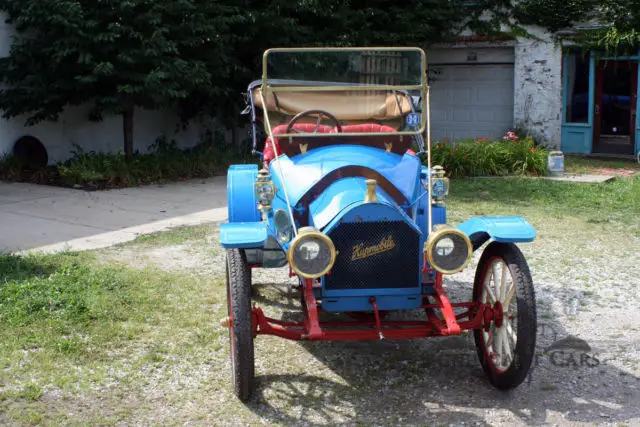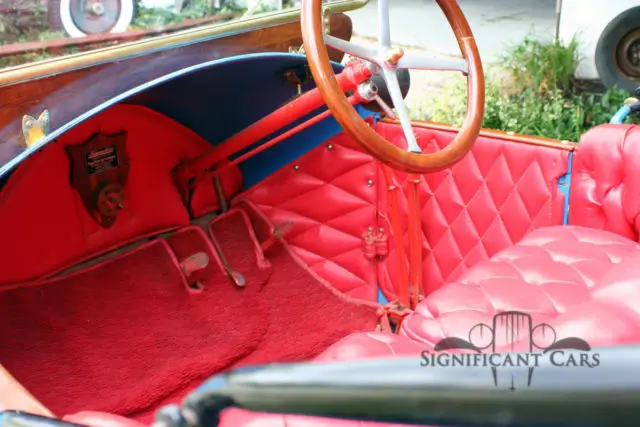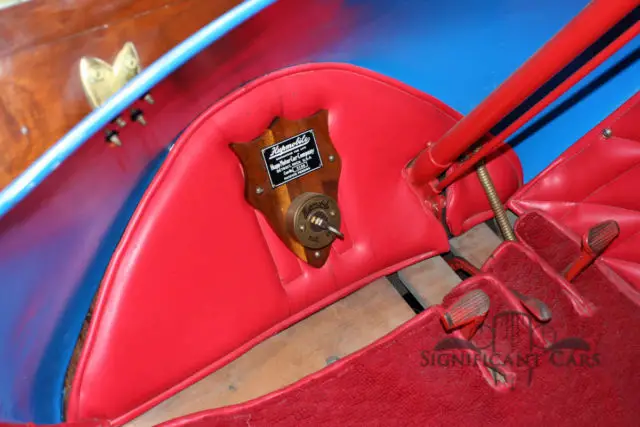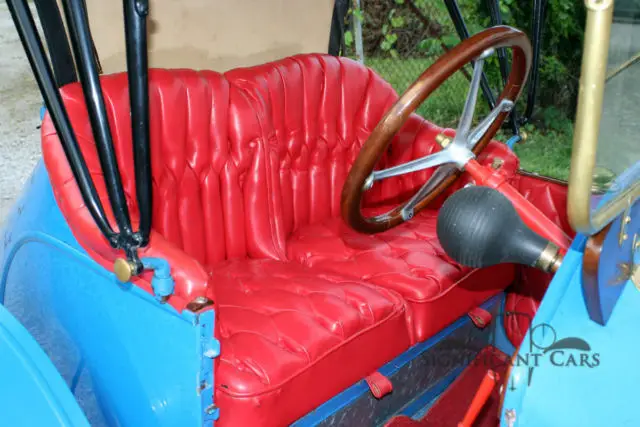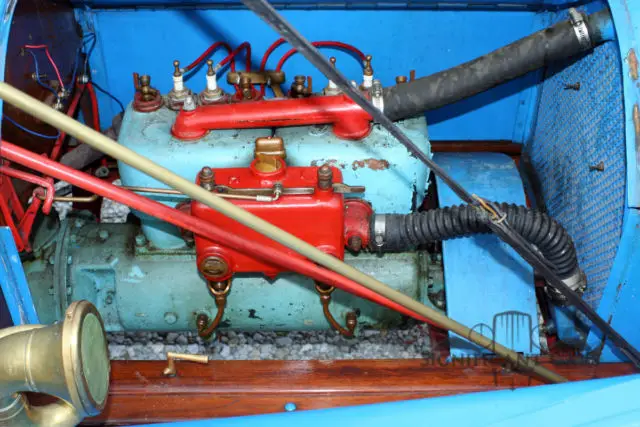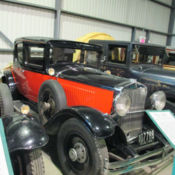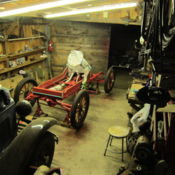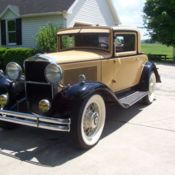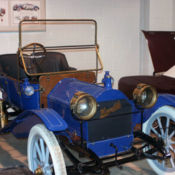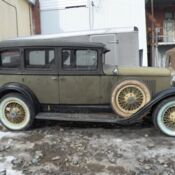1910 Hupmobile Model 20 Torpedo - Good Runner! 1 OF 4 KNOWN!
Price: -
Item location: Indianapolis, Indiana, United States
Description:
1910 Other Makes Hupmobile Model 20 Torpedo
View our eBay StoreSign up for our Newsletter1910 Hupmobile Model 20 Torpedo Offered as a buy-it-now. Make us an offer!
This nice Model 20 Runabout has all the eye appeal and jockular looks of the most sporting Brass Era Runabouts. An older restoration, the car is in great condition in every area except the paint, which could use refreshed. The Brass is all intact and in excelllent condition and polished up quite nicely. The top and interior are in excellent condition as well. We rebuilt the carburator, and did a tune up which is all the car needed to start right up and run well. The tires and wheels are are excellent condtion and are good to go.
This will be a fun and reliable car for Brass Era Tours, and would be easily cosmetically refreshed for the show circuit if thats what you are looking for.
We have many more photographs of this car, please click on any image to be taken to our full-size image list!
Robert Craig Hupp, a former employee of Oldsmobile and Ford, founded the company with his brother Louis Gorham Hupp in 1908. Production began in 1909. In 1910, production increased by more than 5000. Following disagreements with his financial backers Robert Hupp sold his stock in the Hupp Motor Car Company and established the short-lived RCH Automobile Company, later the Hupp-Yeats Electric Car Company. In 1912, Hupp would be one of two automakers pioneering the use of all-steel bodies, joining BSA in the UK. Hupp's panels were produced by Hale & Kilburn, which was run by Edward Budd. Carl Wickman, a car dealer in Hibbing, Minnesota, used an unsold 7-passenger model as the first vehicle for what became Greyhound. Hupp Motor Company continued to grow after its founder left. A new plant was purchased in 1924 as Hupp competed strongly against Ford and Chevrolet. DuBois Young became company president in 1924 moving up from vice-president of manufacturing. By 1928 sales had reached over 65,000 units. To increase production and handle the growth in sales, Hupp purchased the Chandler-Cleveland Motors Corporation (Chandler Motor Car) for its manufacturing facilities.
Sales and production began to fall even before the onset of the depression in 1930. A strategy to make the Hupmobile a larger, more expensive car began with the 1925 introduction of an 8-cylinder model, followed by the discontinuance of the traditional 4-cylinder Hupmobile. While aiming for a seemingly more lucrative market segment, Hupp essentially turned its back on its established clientele. Nevertheless, in a constant effort to remain competitive, Hupp introduced a number of new features. They were one of the very first automakers to equip their cars with "free wheeling," a device that enjoyed immense, but brief, popularity in the early 1930s. Unfortunately, the company made the same mistake that many other medium-priced carmakers were making at the same time. Namely, in an attempt to capture every possible sale, they offered many different models. With Hupmobile's relatively low production volume, the result was that no model could be produced in sufficient quantity to keep manufacturing costs low enough to provide an operating profit. Hupp abandoned its more conservatively styled product line and turned to industrial designer Raymond Loewy to design its 1932 Hupp cyclefender, a flashy roadster that did well at the track, but sales continued to decline. 1934 saw the introduction of a striking restyle called the "Aerodynamic" by Loewy, as well as the lower-priced series 417-W using Murray-built slightly-modified Ford bodies. Despite these innovations, squabbles among stockholders and an attempted hostile takeover in 1935 took their toll on the company. By 1936 the company was forced to sell some of its plants and assets and in 1937 Hupmobile suspended manufacturing. A new line of six- and eight-cylinder cars was fielded for 1938, but by this time Hupp had very few dealers, and sales were disappointingly low. Desperate for a return to market strength, Hupmobile acquired the production dies of the Gordon Buehrig designed Cord 810/812 from the defunct Cord Automobile Company in 1938. Hupmobile hoped that utilizing the striking Cord design in a lower-priced conventional car, called the Skylark, would return the company to financial health. Enthusiastic orders came in by the thousands, but production delays soured customer support. Lacking adequate production facilities, Hupmobile worked out a deal with the ailing Graham-Paige Motor Co. to share the Cord dies, which would be built at Graham's facilities. The Graham edition, called the Hollywood, differed from the Skylark in only a few minor details. Our Ebay Policies:
Significant Cars is one of the largest Collector Car Brokers and Dealers in the Country. Since 2003 we have worked hard to "change the way collector cars find new homes" by providing unparralleled web presentation of the cars we are representing. Most of our cars have over 30 photographs, and these can be viewed by visiting our website (our eBay handle dot com), or by clicking on any of the photographs in the black background area of our EBay listings. We welcome your call with any questions about any of our listings at anytime at 800-837-9902 and certainly encourage your personal inspection of any of the cars we are selling-just call us and we will be happy to set up an appointment for your to see and test drive the car.
We realize that eBay is a difficult venue to properly evaluate an item as complex as an automobile. You can feel secure bidding with confidence on any of our cars since we guarantee your satisfaction! Should you win the auction and come to see the car and decide you do not want it for any reason, no negative feedback will result, any deposit you may have paid will be cheerfully refunded.
Description images and copy © Significant Cars, Inc.
Vehicle Details:
- Condition: Used
- Make: Other Makes
- Model: Hupmobile Model 20
- Type: Convertible
- Trim: Torpedo
- Year: 1910
- Mileage: 80,000
- VIN: 8018
- Color: Blue
- Engine size: 4 Cylinder
- Number of cylinders: 4
- Transmission: Manual
- Drive type: 2 Speed
- Interior color: Red
- Options: Convertible
- Vehicle Title: Clear Want to buy? Contact seller!



